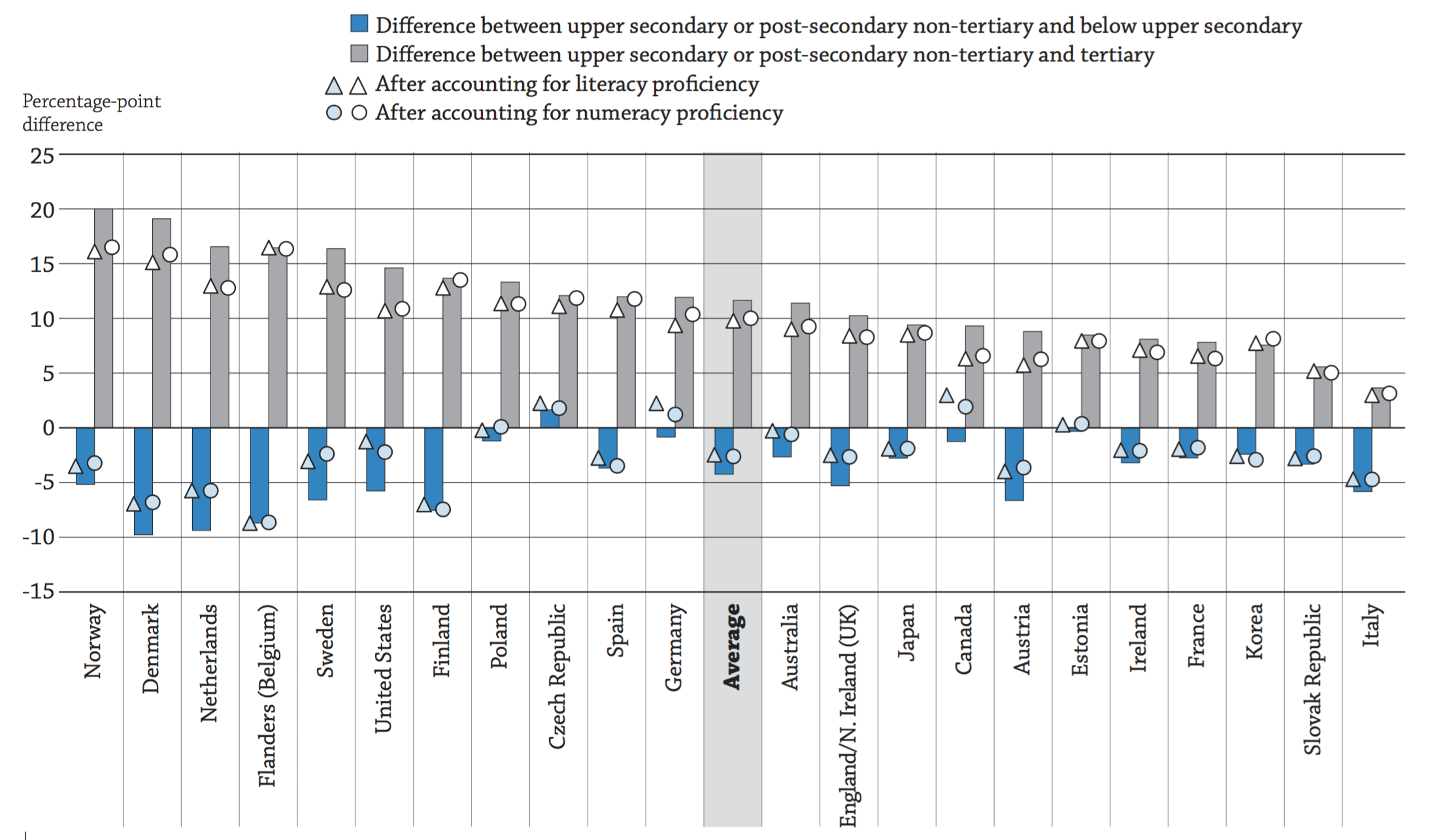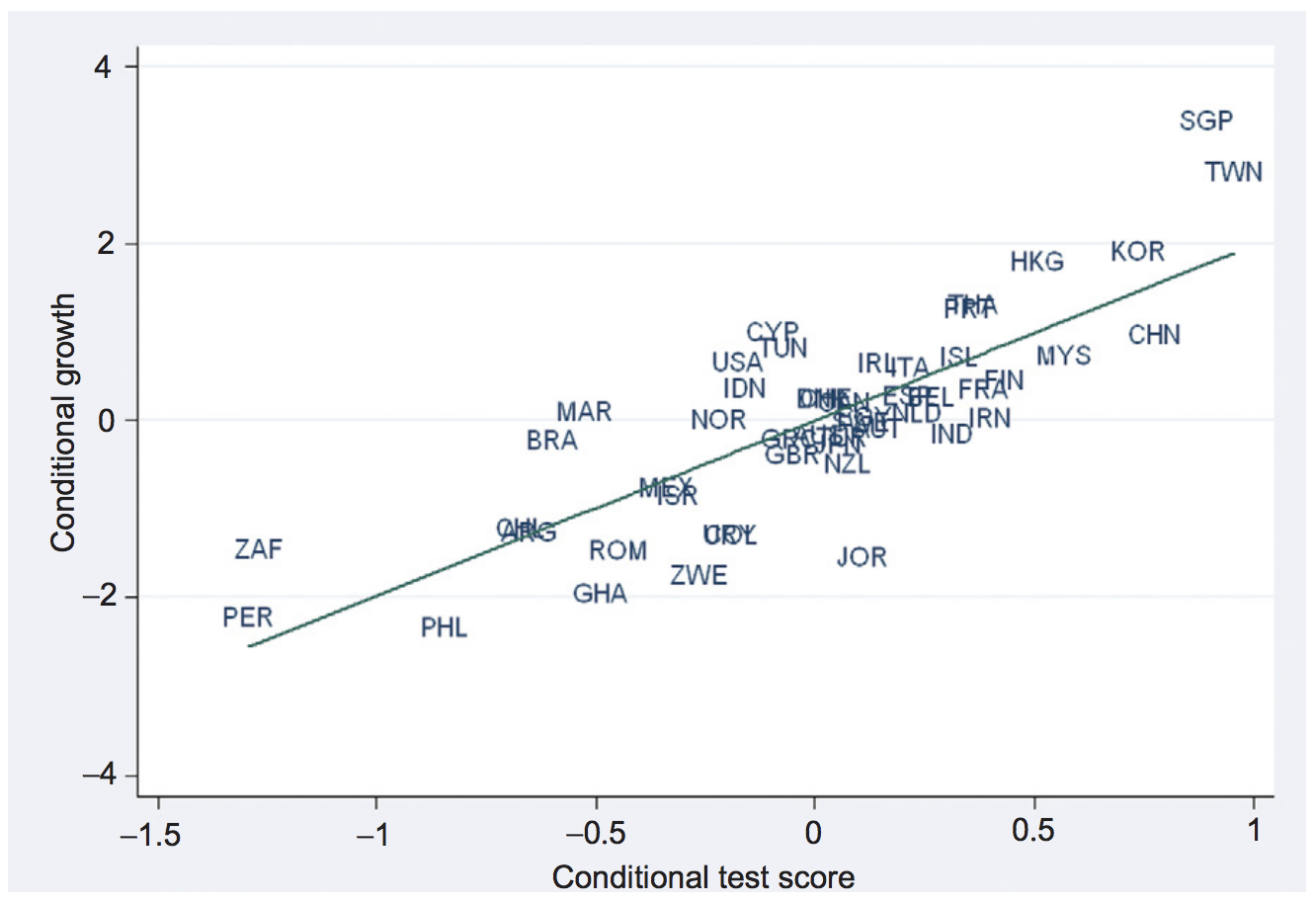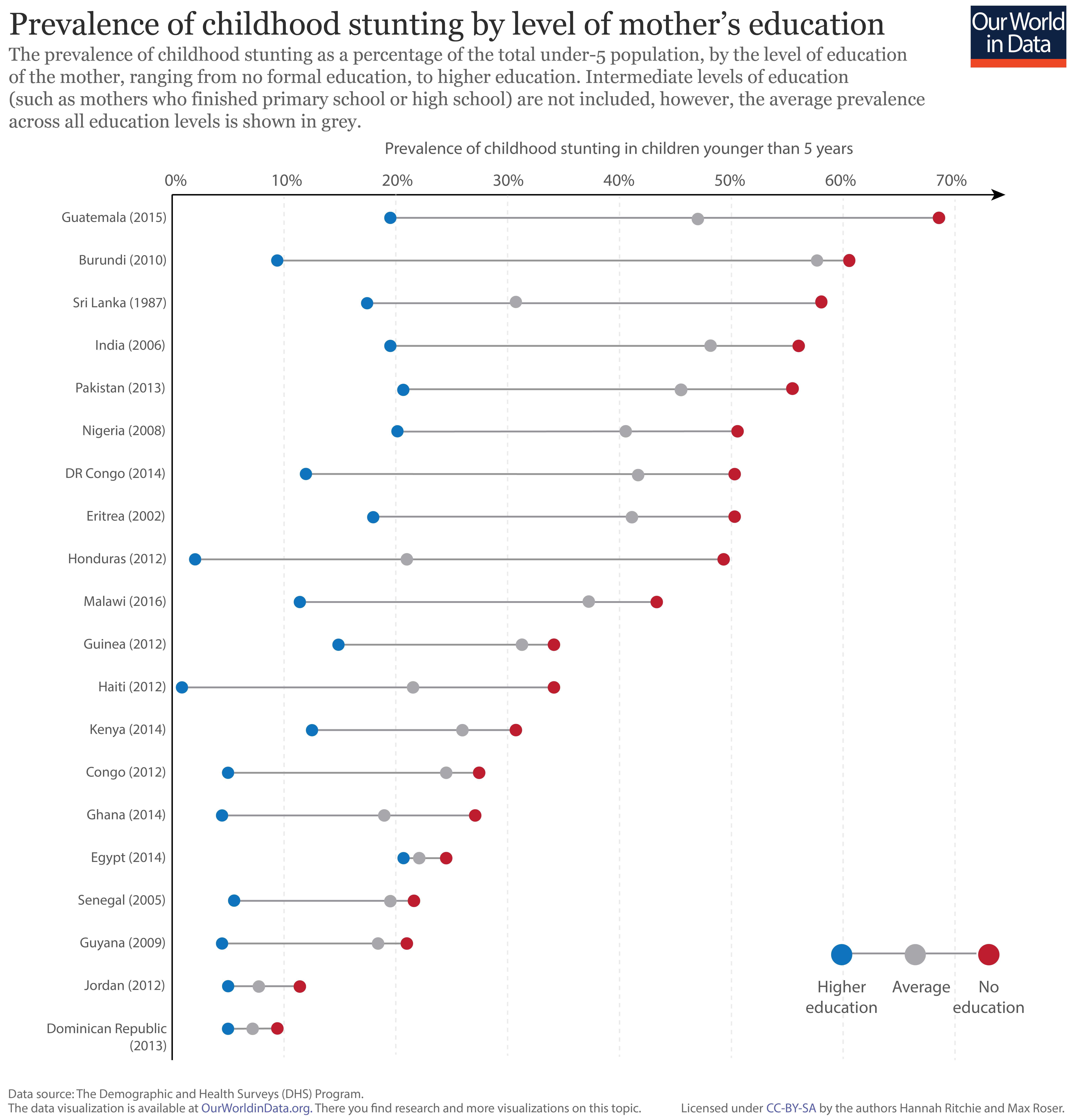Global education:A selection of key charts and trends
Part 6 of 7
Cross-country correlations between education and other social outcomes
Child Mortality
This chart shows the strong correlation between child mortality and educational attainment, across countries and time.The available evidence suggests women’s education leads to lower child mortality because it contributes towards healthier habits and choices, including child spacing (Brown and Barrett 1991).
Trust and social capital
Likelihood of reporting to trust others, by educational attainment – OECD Education at a Glance (2015)

This chart shows how self-reported trust in others correlates with educational attainment. In all countries individuals with tertiary education were by far the group most likely to report trusting others. And in almost every country, those with post-secondary non-tertiary education were more likely to trust others than those with primary or lower secondary education.
Democracy and stability
Education is considered a key determinant of democratic political institutions, both because it promotes political participation at the individual level, and because it fosters a collective sense of civic duty.This chart shows that countries with higher educational attainment in the past are more likely to have democratic political regimes today. Here you can read more about the evidence.
Economic Growth
Association between test scores and long-run economic growth after controlling for baseline GDP and years of schooling – Hanushek and Woessmann (2010)

Child Labor
In countries where children tend to work longer hours, it is more common that working children remain out of school. In fact, there are academic studies that provide evidence in support of a causal relationship: Work often does cause children to remain or drop out of school.
Stunting and undernourishment

Stunting is an indicator of severe malnutrition and it can have severe impacts on both cognitive and physical development throughout an individual’s life.This link is also important across generations. As this chart shows, stunting of the child is positively correlated with education of parents.
Corporal punishment
Corporal punishment of children is still legal and common in many settings. In India, for example, almost 4 out of 5 children age 8 report physical punishment by teachers.
Violence
Children who are victims of abuse and neglect, at home or at school, tend to have worse education outcomes. This correlation can be partly explained by the impact of violence on mental and physical health. Hormones associated with violence, such as cortisol, can inhibit physical growth and the children’s susceptibility to illness. And it is also the case that these hormones can impair the development of neural connections in parts of the brain that are critical for learning. Violence in the early years can undermine lifelong health, learning, and behavior. Moreover, the interaction between violence and education operates in both directions. This means education can be used as an instrument to reduce the prevalence of violence.
Other resources from Our World in Data
- More slides from this series: ourworldindata.org/slides/Edu_Key_Charts/Menu/ToC.html
- Other articles and resources across related topics: ourworldindata.org/global-rise-of-education ourworldindata.org/child-labor ourworldindata.org/violence-against-children ourworldindata.org/child-maltreatment-and-educational-outcomes